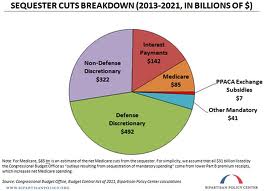Like it or not, fee-for-service medicine is on the decline in the United States.
This March, the U.S. Department of Health and Human Services reported an estimated 30 percent of Medicare payments are now — a year ahead of schedule — being disbursed via pay-for-performance models. Providers wanting a slice of this pie will need to take on additional risk-based contracts, but healthcare executives are understandably skeptical of the financial risks they entail. Consulting giant KPMG recently found 52 percent of hospitals expect value-based contracts to lead to a reduction in profits. For providers, the risk-based contracting calculation boils down to a simple question: Can you provide impressive patient outcomes with minimal additional resources? Hospitals have steadily improved patient outcomes in recent years, so the challenge is now delivering quality care without incurring hefty personnel costs. Groups that participate in risk-based contracting are increasingly turning to patient monitoring platforms to make efficient use of medical personnel. These systems improve efficiency because they help staff members track day-to-day metrics for more patients, and they improve effectiveness by providing information needed for timely intervention, boosting overall quality. The choice of a patient-monitoring platform, though, is an important one. Not all platforms work for all providers, so if your patient monitoring and care management strategies aren’t helping you grow your risk-based contracting, it may be time to re-evaluate the processes and tools you’re using. How effective is your patient-monitoring process? There are two places to look when evaluation whether your patient monitoring system is a healthy fit:
- The system’s users: The physicians, nurses, medical assistants, and staff responsible for reviewing patient-monitoring data have the best insights into the tool’s efficacy. If the healthcare professionals who are closest to the care process don’t see results in the first few months, consider switching platforms.
- Claims data: After using a platform for a few months, you should see statistically significant changes in claims data. To evaluate your platform, compare savings from improved claims data versus the total cost (direct and indirect, including FTE training time).
If you’re dissatisfied with your platform’s performance, don’t fall prey to the sunk cost fallacy. The longer unsuccessful solutions remain in play, the more they damage an organization’s efforts in transitioning to risk-based contracting. When shopping for a new patient monitoring system, consider one that’s a portfolio rather than trying to patch together a ton of disparate solutions. Training costs add up, especially when your team needs to be trained on multiple platforms. Furthermore, patients with co-morbidities will struggle with confusion if they have to switch between different vendors’ apps or wearables to manage their health. As a word of caution, steer clear of platforms that present medical claims that aren’t validated. If you’re considering a patient-monitoring tool that can’t point to ironclad evidence to support its assertions, you should discount its claims by the likelihood that the solution will fail. And as any physician worth his or her salt will remind you, outcomes are more than just ALC counts and systolic pressures — satisfaction and adherence are key to building sustainable care models. Learn how to maximize your patient-monitoring strategy. Many providers consider risk-based contracting to be tricky territory. To boost efficiency of your patient monitoring platform and maximize profits associated with risk-based contracting, follow these four steps: 1. Promote your patient portal. Contrary to popular belief, neither practice size nor patient age greatly influences patient portal engagement rates. In fact, older patients use portals more frequently than younger ones. Of the 64 percent of Americans who don’t use patient portals, 35 percent didn’t even know they were available. Large practices that don’t have personal patient relationships should drive engagement by investing in portal onboarding staff. 2. Invest in smart devices. In our connected era, Bluetooth scales and glucometers help patients monitor their own biometrics and deliver real-time data to healthcare providers. Providers, however, must remember that less affluent patients who need monitoring may not have access to technologies like smartphones and reliable home internet connections. 3. Analyze claims data to identify high-risk patients. “Population health” is no longer just a buzzword heard at healthcare conferences; it’s become the standard of care for risk-based providers. By analyzing claims data, providers can understand which patients need more attention from medical staff. Use this data to allocate additional medical staff where needed and make cuts elsewhere to maintain positive ROI. 4. Automate telephonic monitoring. Use automated phone calls or SMS messages to improve patient engagement while providing real-time insights to care teams. In my experience, patients under 70 years old prefer text, while older patients almost exclusively prefer automated calls. Be wary, however, because many SMS solutions operate via smartphone apps, which some patient populations may not be able to use. Thanks to the Affordable Care Act, risk-based contracting is growing rapidly. Providers who use the model can increase margins using patient monitoring and data management technology. The key is to track personnel efficiency and effectiveness — and, most of all, patient outcomes — to ensure a healthy investment.







